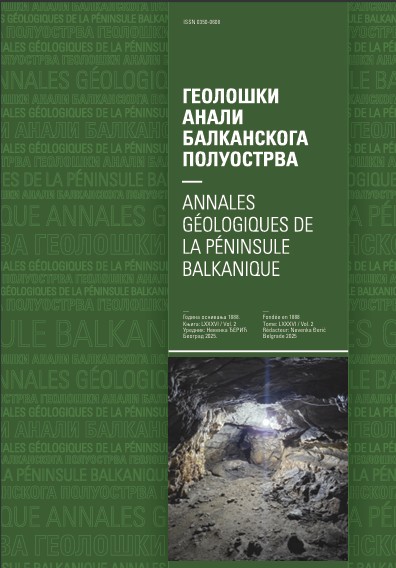Radiometric K/ag data as evidence of the geodynamic evolution of the Ždraljica ophiolitic complex, central Serbia
Abstract
The study presents age data and petrologic characteristics of igneous rocks of the Ždraljica ophiolitic complex (ŽOC), situated in central Serbia, 150 km south of Belgrade. The complex consists predominately of a MORB/VAB-like tholeutic suite, represented mostly by gabbros and diabases. The tholeiitic suite is intruded by calc-alkaline intermediate and acid magmas of a VA-affinity, which presumably formed in a pre-collisional setting. The whole complex is intruded by peraluminous granite magmas. The crystallization age of the calc-alkaline pre-collisional quartzdiorite is 168.4±6.7 Ma and it post-dates the formation of the here exposed oceanic crust. Geological evidence suggest that the emplacement of the complex occurred during the Upper Jurassic. With respect to their petrology and age, the Ždraljica ophiolitic rocks are similar to the south Apuseni Mts. ophiolites, situated to the north, and to the Kuršumija and Guevgeli ophiolites, situated to the south. All these ophiolites probably formed as parts of a single Jurassic belt, which can be termed the eastern branch of the Vardar Zone.
Copyright (c) 2005 Geološki anali Balkanskoga poluostrva

This work is licensed under a Creative Commons Attribution 4.0 International License.










